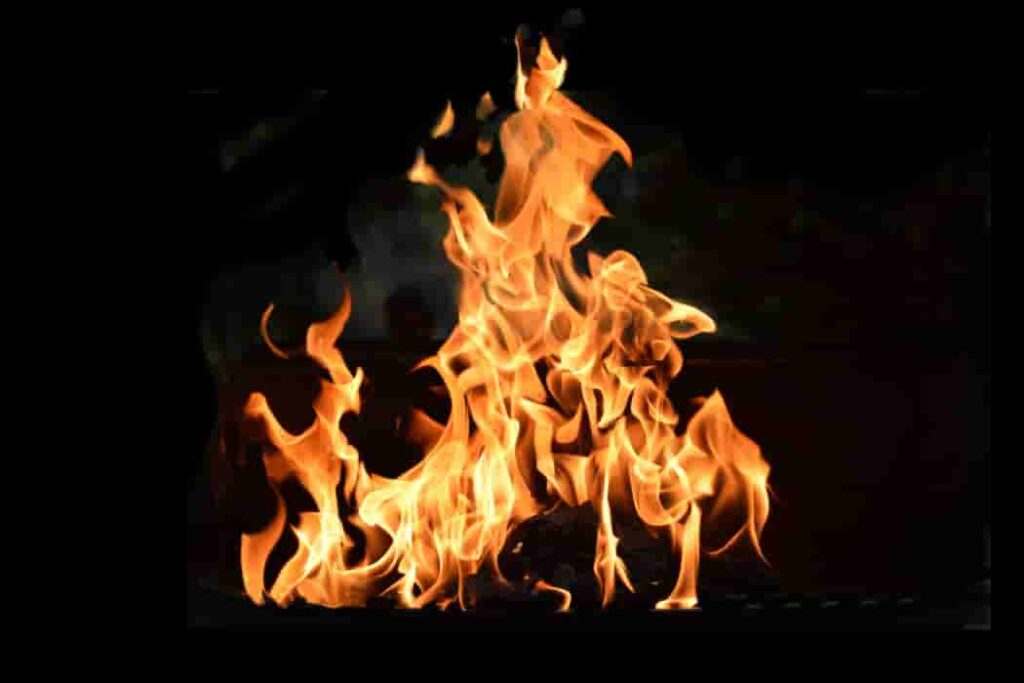The Netflix animated series Trese, based on the award-winning Filipino comics by Budjette Tan and Kajo Baldisimo, has captivated audiences worldwide with its dark and thrilling portrayal of Philippine mythology. Among the intriguing characters featured is Santelmo, a fiery entity summoned by Alexandra Trese from her ever-present cellphone. But who exactly is Santelmo, and what are the fascinating origins of this mythical being in Philippine folklore?

Unveiling the Santelmo: Friend or Foe?
In Trese, Santelmo appears as a disembodied flaming head who serves as Alexandra’s loyal companion and informant within the supernatural world. He offers cryptic advice, aids her in battle with fire blasts, and sheds light on the hidden workings of the mystical creatures that lurk in the shadows of Manila.
However, the portrayal in Trese is a contemporary take on a much older Philippine myth. Traditional beliefs surrounding Santelmo vary depending on the region. Here are some of the most common interpretations:
Balls of Saint Elmo: The name Santelmo is derived from Saint Elmo, the patron saint of sailors. Filipino fishermen believed Santelmo appeared as balls of flickering light atop ships’ masts during storms. These lights were seen as a bad omen, a warning of impending danger or shipwreck.
Friendly Fire: Santelmo is viewed as a benevolent spirit in some regions. These flickering lights were said to be the souls of departed loved ones, guiding lost travelers or fishermen home.
Electrical Enigma: A more scientific explanation suggests Santelmo is a manifestation of St. Elmo’s fire, a well-documented electrical phenomenon that causes luminous discharges around pointed objects during thunderstorms.
A Deep Dive into Filipino Folklore
The concept of Santelmo is intricately linked to the rich tapestry of Philippine animistic beliefs. Filipinos traditionally viewed the natural world as teeming with unseen spirits, both benevolent and malevolent. Understanding the cultural context surrounding Santelmo sheds light on the significance of this character in Trese.
Spirit World Guardians: In pre-colonial Philippines, various indigenous belief systems held that spirits inhabited natural phenomena like lightning and fire. Santelmo could be interpreted as a guardian spirit of these elements, a powerful entity with whom humans could potentially interact.
Respecting the Unknown: The unpredictable nature of Santelmo reflects the Filipinos’ respect for the unseen forces that governed their world. Appeasing these spirits was believed to bring good fortune and ensure safety during perilous journeys.
Trese’s Modern Interpretation
The Trese creators cleverly adapt the Santelmo myth for a contemporary audience. By portraying Santelmo as a fire-wielding entity tethered to technology, they bridge the gap between traditional folklore and the modern world.
This portrayal resonates with viewers by:
Highlighting Filipino Mythology: Trese introduces a global audience to the richness of Philippine folklore. Santelmo is a gateway to a deeper understanding of the fascinating creatures and stories that have captivated Filipinos for generations.
Adding Depth to the Narrative: Santelmo’s enigmatic nature intrigues the Trese storyline. His cryptic pronouncements and fiery persona create an aura of mystery, keeping viewers engaged and eager to learn more about his role in Alexandra Trese’s world.
The Enduring Legacy of Santelmo
The Santelmo myth continues to capture the imagination of Filipinos. From its origins as a storm warning to its modern portrayal in Trese, Santelmo serves as a reminder of the enduring power of storytelling and the importance of preserving cultural heritage.
Beyond Trese: Exploring Filipino Mythological Creatures
Trese’s success has sparked renewed interest in Philippine mythology. If you’re curious to delve deeper, here are some fascinating creatures to explore:
Tikbalang: A tall, spindly creature with elongated limbs said to lure travelers astray.
Kapre: A tree-dwelling giant who smokes a giant cigar and is known for playing pranks on humans.
Manananggal: A vampire-like creature that can detach its upper torso and fly at night for prey.
By exploring these and other mythological beings, you can gain a deeper appreciation for the rich tapestry of Philippine folklore and the enduring legacy of stories passed down through generations.
Conclusion
Trese’s Santelmo is more than just a fiery sidekick. He embodies the fascinating world of Philippine mythology, where the boundaries between the natural and supernatural blur. Understanding the origins of Santelmo allows viewers to appreciate the depth and cultural significance woven into the Trese narrative. So, the next time you encounter Santelmo in the thrilling world of Trese, remember the rich mythology and cultural context that imbue this character with intrigue. Trese offers a captivating gateway to explore the wonders of Philippine folklore, leaving viewers eager to discover more about the archipelago’s unique and captivating stories.



